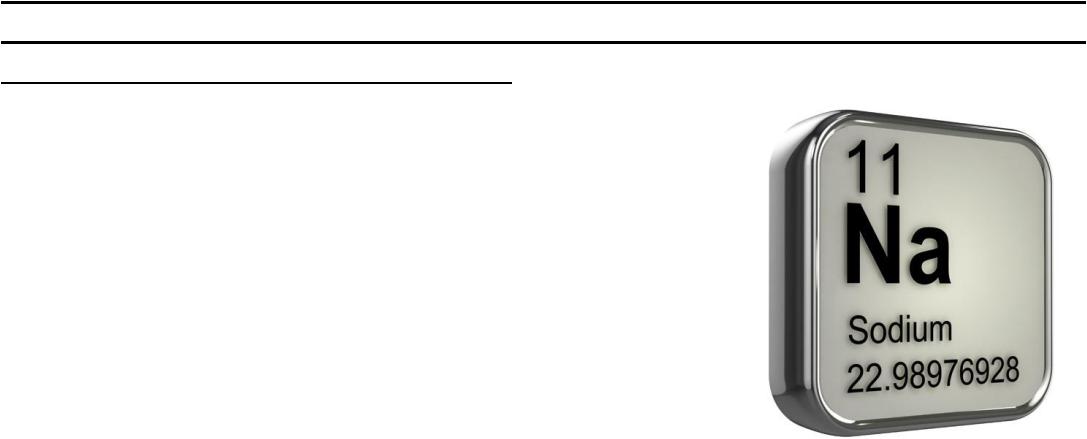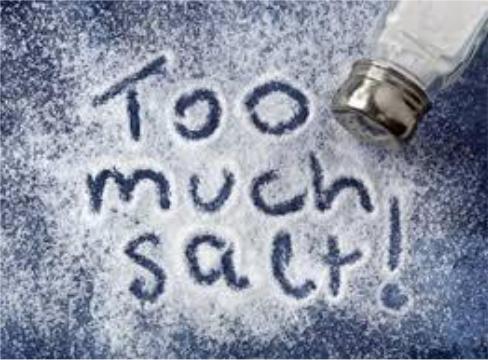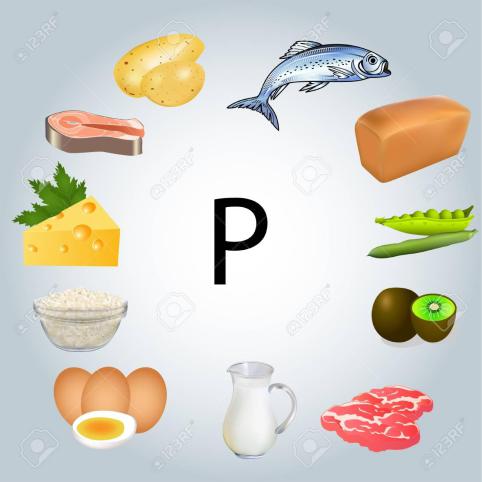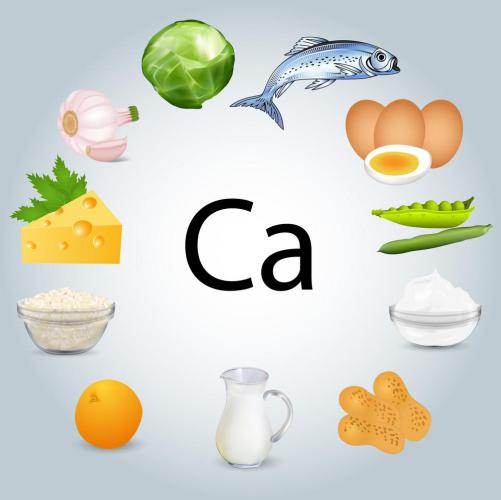
English Lectures / Functional chemistry 1 eng
.pdfPotassium decrease
Let’s write!
A decrease in the level of potassium in the blood is also accompanied by cardiac arrhythmias. In addition, potassium deficiency can manifest itself as muscle weakness, cramps, respiratory failure, and dysfunction of the pelvic organs. The most common causes of potassium deficiency in the body are:
-loss of potassium with repeated vomiting, diarrhea;
-prolonged uncontrolled use of diuretics;
-prolonged use of steroid hormones, especially in large doses;
-a decrease in potassium intake in the postoperative period, especially during operations on the organs of the gastrointestinal tract;
-diseases accompanied by increased synthesis of the hormone cortisol by the adrenal glands;
-diseases accompanied by increased production of aldosterone by the adrenal glands.

Sodium
Sodium (130-170 mmol/L) is an electrolyte that is contained mainly in the extracellular fluid, and in a smaller amount – inside the cells. It affects the state of the cardiovascular, nervous and muscle systems and, in addition, together with other electrolytes provides a normal internal environment of the body.

Sodium increase |
Let’s write! |
|
Excess sodium can be caused by dehydration, salt overload, kidney diseases that occur with oliguria (a sharp decrease in the amount of urine), excessive secretion of aldosterone by the adrenal gland tumor.
Sodium decrease
Let’s write!
Sodium deficiency occurs with:
•cirrhosis of the liver with ascites (accumulation of fluid in the abdominal cavity),
•kidney diseases with chronic renal failure, nephrotic syndrome
•excessive intake of diuretics
•uncompensated diabetes mellitus with complications,
•pathology of the adrenal glands with a decrease in the synthesis of their hormones,
•long salt-free diet.

Inorganic phosphorus
Inorganic phosphorus (0.7-1.4 mmol/L) – a trace element contained in the body in the form of salts (calcium, magnesium phosphates, etc.), is necessary for the formation of bone tissue and cellular energy metabolism. 85% of all phosphorus is concentrated in bones. Its metabolism is closely related to the metabolism of calcium in the body, therefore, in clinical practice, the combined determination of the content of these two trace elements is most often used.
Inorganic phosphorus increase
Let’s write!
An increased phosphorus content occurs with:
•hypoparathyroidism (a decrease in the production of parathyroid hormone by the parathyroid glands),
•an excess of vitamin D,
•bone pathology,
•kidney diseases (nephritis, nephrosis),
•severe diabetes mellitus
Inorganic phosphorus decrease
Let’s write!
A decrease in the level of phosphorus may be associated with the depletion of its reserves in the body, with a violation of its absorption in the intestine or increased excretion through the kidneys. The most common causes of low serum phosphorus are:
•alcohol abuse
•deficiency of vitamin D and phosphates in food;
•bowel disease with impaired absorption;
•hyperparathyroidism (increased synthesis of parathyroid hormone by the parathyroid glands);
•some malignant tumors;
•long-term use of drugs that bind phosphate.

Calcium
Total calcium (2.25-2.75 mmol/L) – the most important trace element involved in the construction of the skeleton, the work of the heart, neuromuscular activity, blood coagulation and many other processes. Calcium metabolism is closely related to the skeletal system, the functioning of the parathyroid glands. About 99% of the calcium is in the bones, the rest is in the serum. In this case, half of the calcium circulates in ionized (free) form, the other half - in the form associated with proteins.
Calcium increase |
Let’s write! |
An increase in serum calcium levels is characteristic of:
-hyperfunctions of the parathyroid glands; - tumor lesions of bones;
-prolonged immobilization with complex bone fractures;
-diseases of the adrenal glands with a violation of their hormone-synthesizing function;
-prolonged use of corticosteroids and hormone-containing contraceptives;
-an overdose of vitamin D;
In addition, a physiological increase in blood calcium is observed in the third trimester of pregnancy, in newborns after 4 days of life, and also after eating foods rich in calcium salts.
Calcium decrease |
Let’s write! |
A low level of total calcium in the blood is observed with:
•insufficient synthesis of parathyroid hormones by the parathyroid glands,
•rachite
•kidney disease with chronic renal failure,
•albumin protein deficiency in the blood
